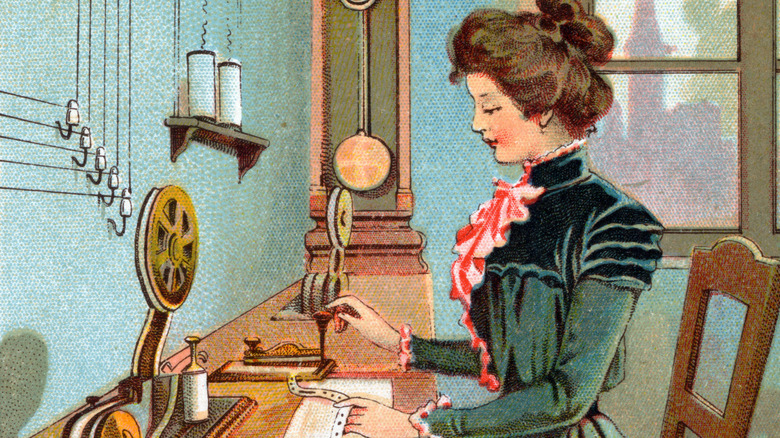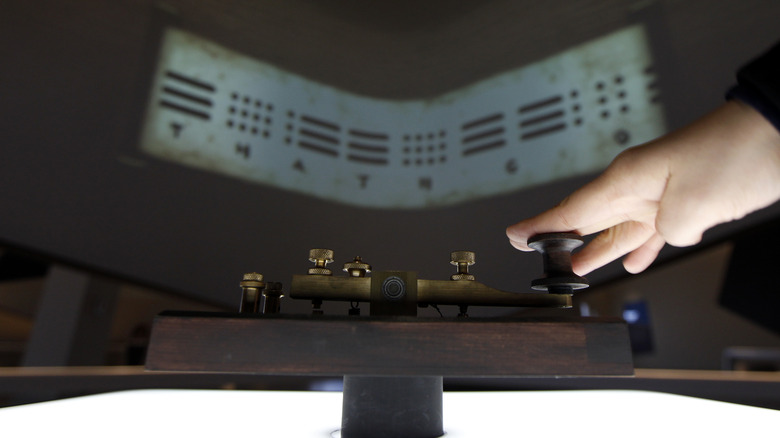Everything Known About The Last Telegram Western Union Ever Sent
When Samuel Morse sent the first telegram on May 25, 1844, he changed communications forever. Morse started out as an artist, and was particularly known for his portraits, often receiving commissions from the rich and powerful of his day. He was inspired to invent a way in which people could instantly contact one another after a personal tragedy that struck when he was away from his Connecticut home. Morse was in Washington D.C., painting a portrait of the Marquis de Lafayette, per History. Morse's wife became critically ill while he was away, and his father sent him a message via the standard of the day — a messenger on horseback. By the time Morse got the message and returned home, his wife had died and was already buried. Grieving, Morse turned away from his career as an artist and swore to make long-distance communications quicker and less reliant on having to physically carry messages to their intended recipients.
Right after that first Morse-coded message — "What hath God wrought?" — traveled in seconds from the basement of the United States Capitol building to a railway depot in Baltimore, Maryland, the United States government invested in the construction of a national system of telegraph wires. Within a decade, over 20,000 miles of wire lay throughout the country, and by 1866, it was possible to send transatlantic messages from North America to Europe. Today, we take this ability to communicate so quickly for granted; many people can and do use their cell phones to casually send instant messages all day.
Long distance phone calls and instant messages made telegrams obsolete
The widespread availability of long distance telephone services was the first technological advance that eclipsed telegrams as a method of communication, followed by fax machines, email messaging, and instant messaging. Per NPR, telegrams remained popular throughout the 1920s and 1930s in the United States due to the fact that they cost less than long-distance phone calls. NPR also points out that today's "textspeak" had a predecessor in telegrams; punctuation cost extra, so people substituted the word "STOP" instead of a period. Other money-saving linguistic loopholes including omitting pronouns and verbs, giving telegrams their signature staccato, terse grammar and style. As reported by The New York Times, at the height of their use 1929, Western Union, established in 1851, sent over 200 million telegrams around the world. In 2005, they sent just 21,000. Western Union sent the last United States telegram on January 27, 2006.
India continued using telegraph services after other countries discontinued them, and they remained a routine form of communication for an additional decade after the United States ended their use. Per The Guardian, the Indian government was particularly fond of sending telegrams, hence the country continuing its service until the weekend of July 13, 2013. According to The Christian Science Monitor, this did not shut down the use of telegraphy entirely, but signaled the end of its state-run service. The Monitor spoke with Shamim Akhtar, general manager of Bharat Sanchar Nigam Limited, who revealed, "We were incurring losses of over $23 million a year because SMS and smartphones have rendered this service redundant."

